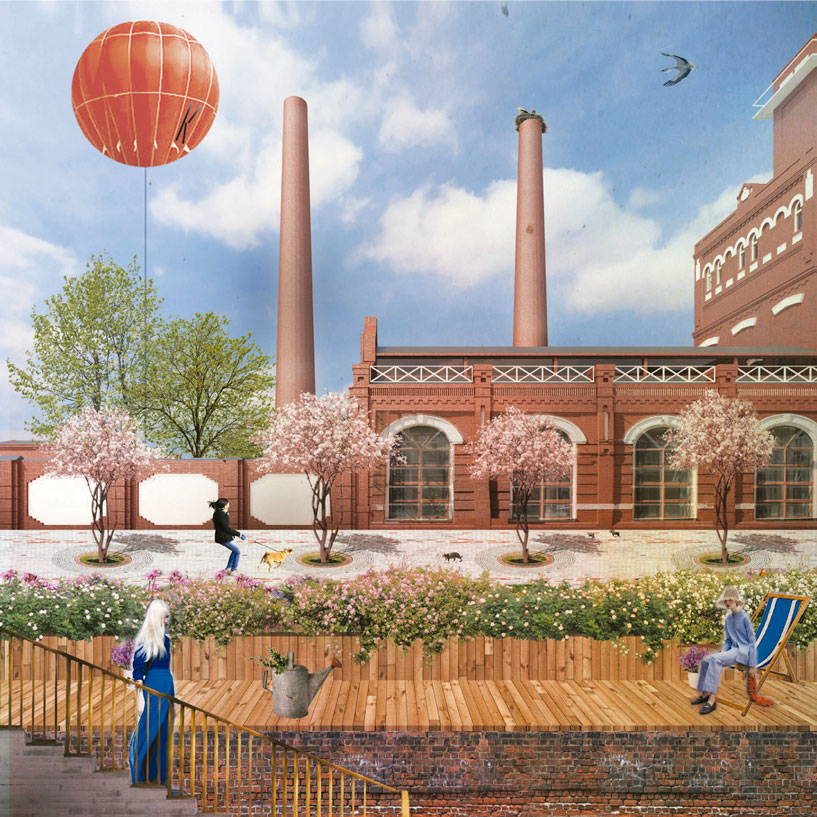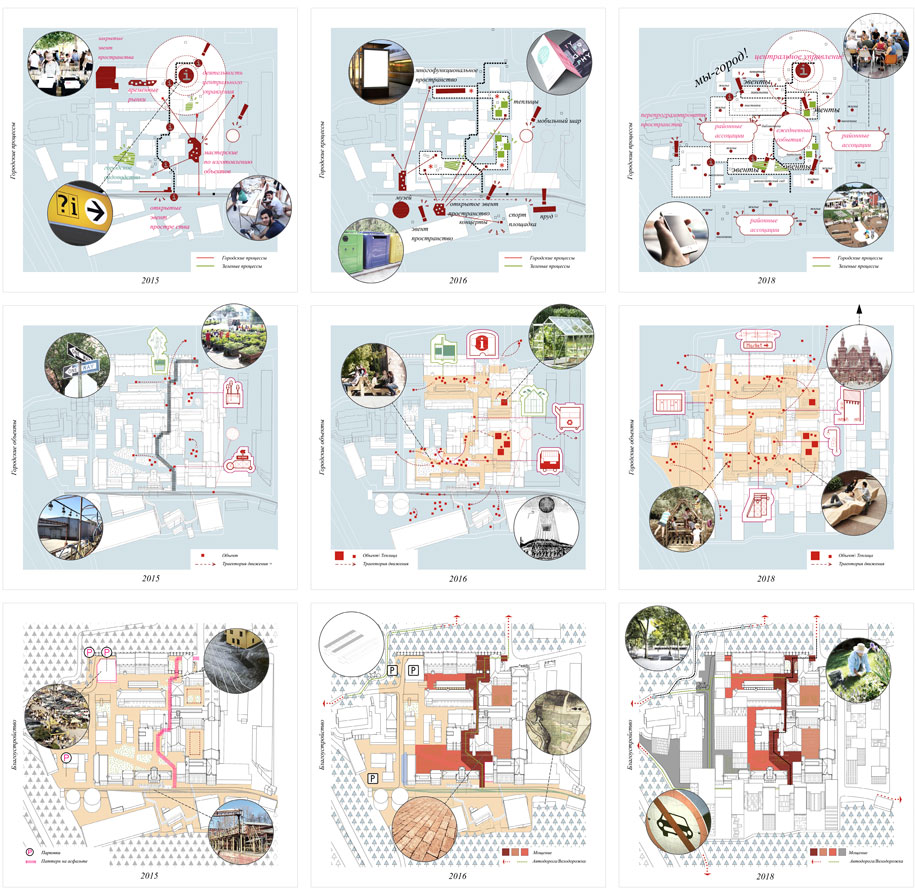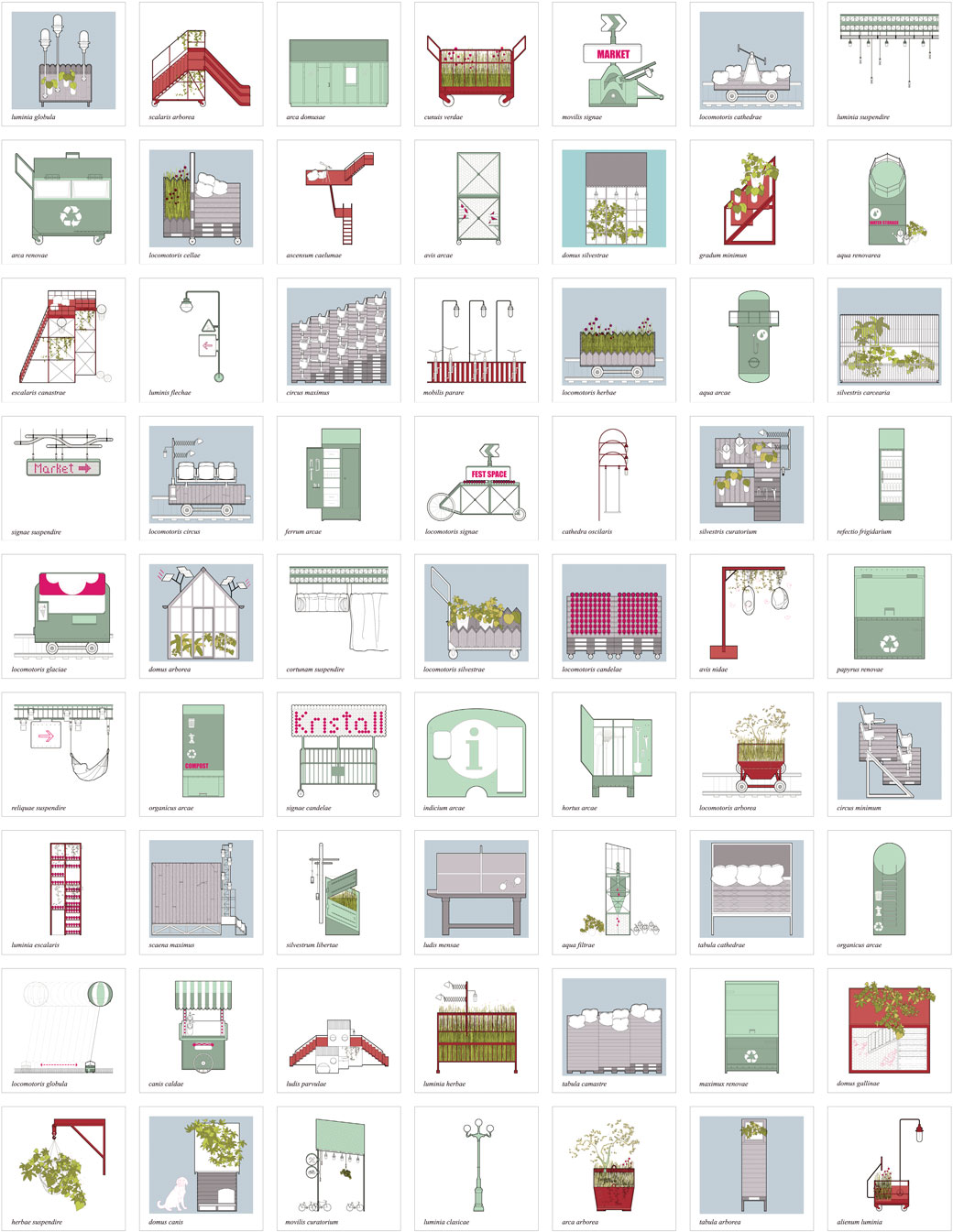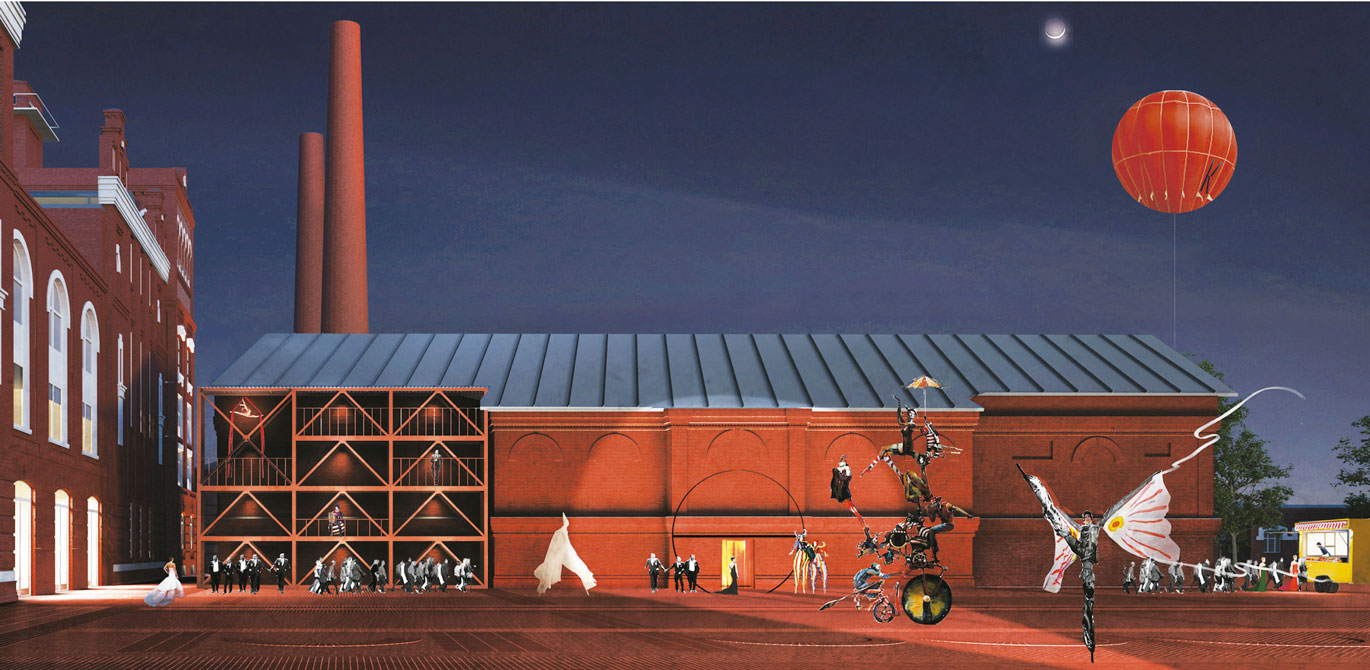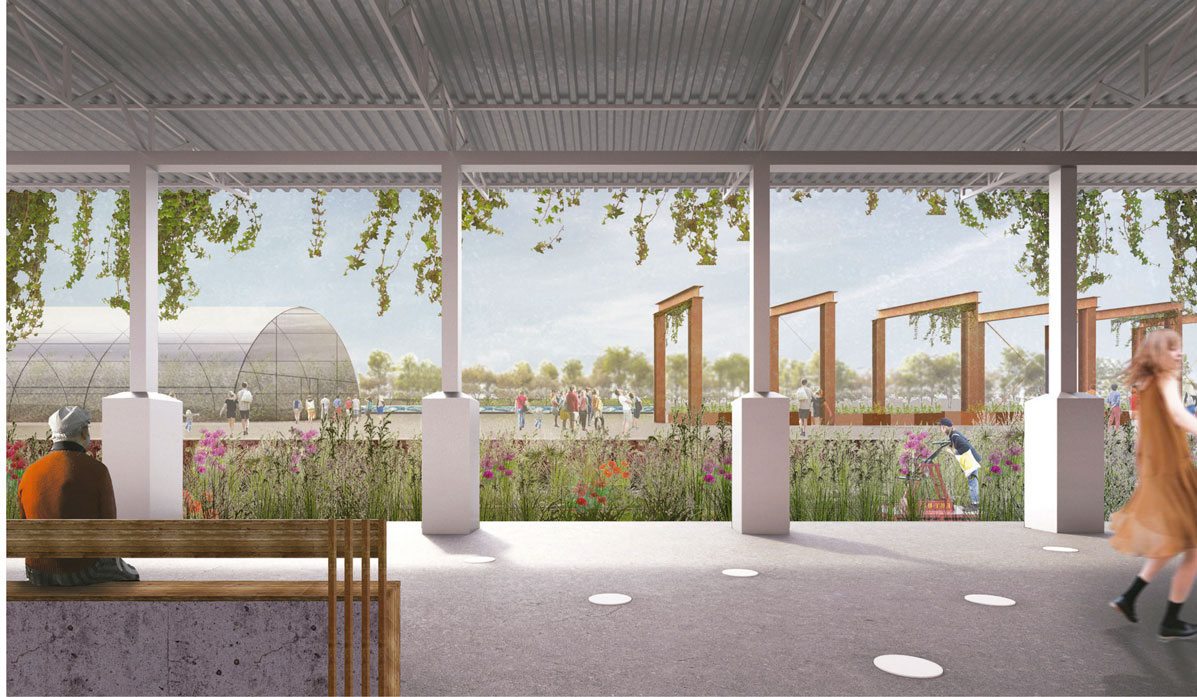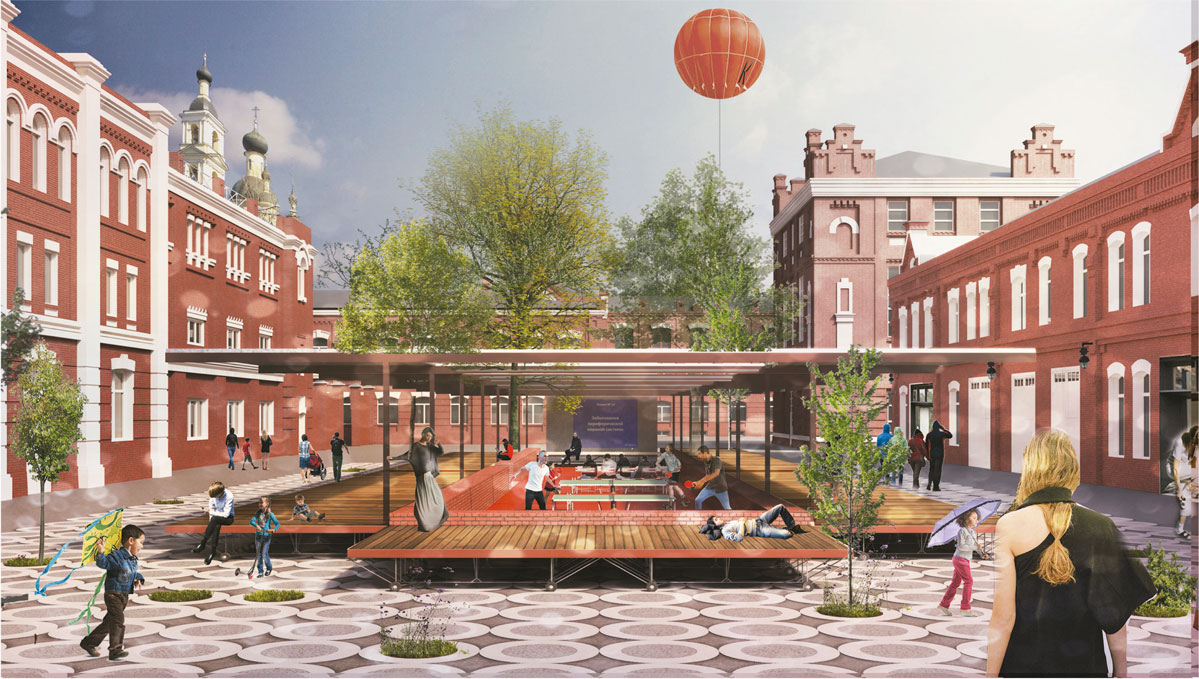Городские Вариации
Competition for the production of a new public space in the former CRISTALL factory in Moscow.
Moscow, Russia
May 2015
In association with the local studio NOWADAYS office
FIRST PRIZE
The competition was looking for ideas to give a new personality to the open space between the blocks of the old Cristall factory complex in Moscow. Nowadays, a masterplan redefines the area, making it a mixed urban fabric, including a residential program as well as cultural and ludic facilities. The competition basis define three different work areas, with independent prizes for each of them. The jury recognized the value of our unitary, participative and continous proposal, and decided to give us all three prizes and entrust us with the development of the whole complex.
01. A flexible scenography open to every urban shareholder: instead of proposing a predefined public space, we plan an oriented process based on the objectification as a tool to achieve a more democratic production of public space. Reducing the scale of design to small objects –URBAN POST ITS- allows that not only the promoters and authorities but also the citizens can participate in the design, production and later management.
02. Intensification of urban centrality in a process open in time: the public space must work in every stage, including the initial construction phase. In order to achieve it, we propose three tools: the design of a support or URBAN HARDWARE, the production of a collection of URBAN POST-ITs and the creation of an URBAN SOFTWARE defined by cultural and social management structures. These three tools will meet the requirements of the initial construction phase in 2015, the creation of a new urban centrality in 2016 and its settling as the core of a new district in 2018.
03. Inventory of recycled urban programmers: with the objective of getting the highest adaptability, we propose a catalogue of recycled urban programmers. The preexisting and nowadays obsolete industrial elements are reused as functional, paving and lighting elements. These urban post-its can be moved, interchanged and transformed, making the ‘Cristall’ area an urban environment adaptable to the always-changing needs of society.
04. Multiple identities in public space views: the urban post-its strategy encourages the continuity of the preexisting industrial identity. It does not mean to replace it, but to renew it in order to achieve a contemporary urban environment. The reusing and recycling of obsolete industrial elements together with the incorporation of new tools for the design of public space, such as the mobile phone applications or the visualization of the construction process, contribute to the creation of a new urban centrality.
>authors:
NOWADAYS office + arenas basabe palacios:
Enrique Arenas, architect
Luis Basabe, architect
Luis Palacios, architect
>colaborators:
María Angeles Peñalver, , architect
Alba Sospedra, architecture student
Silvia Muñoz, architecture student
Andreas Benéitez, architecture student




